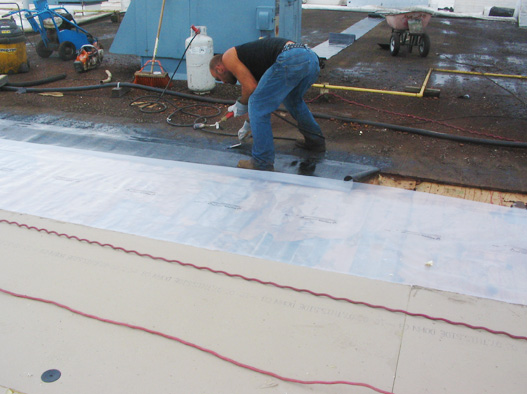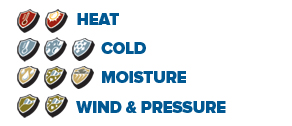IS IT POSSIBLE TO EXTEND
THE LIFE CYCLE OF A ROOF?
When the life cycle of a roof is over, will patching contribute to extending the life cycle of a roof for an indefinite period of time? Unfortunately, the answer is 'no'. With different systems, repairs and maintenance can tell you whether the roof's life cycle is at it's end or not. For example, if a typical 5-year old tar and gravel roof that has a life cycle of 15 years has a leak because of an issue with flashing, then a simple repair to the flashing would add 10 years to the life cycle. However, it's a different story if the leak is in the body of the roof. Generally speaking, this is a clear indication that the life cycle of the roof is at its end or coming to an end and the very most you will get out of the roof is another 2 or 3 years of patching before a catastrophic roof failure. Unfortunately, there are hundreds of roof systems available and becoming an expert with every system can be a daunting task for a customer. There are so many ways of installing these systems how would one know which one is properly installed? Here lies a source of confusion, as there's a definite avenue of discretion when it comes to proper installation. Most roofing companies are basically an agent for their distributor and are simply an installer of their product. Without paying attention to the design of the building or even taking crucial knowledge of environmental sciences into consideration during the installation will cost the life cycle of the roof and the entire building years of service for its owner.
 Once a roof comes to the end of its service life, it cannot be repaired. It can only be replaced.
Once a roof comes to the end of its service life, it cannot be repaired. It can only be replaced.
A well-installed roof will age evenly throughout itself. Some refer to repairing a leak 'roof maintenance'. It doesn't change anything within the service life of the roof system nor does it add life to the roof. Service life is predictable and visible with proper roof inspections, and ideally one would schedule a roof replacement at the end of the service life before the roof causes interior damage due to inevitable leaking. The myth is that 'roof maintenance' will extend this service indefinitely. The truth is it won't. There are different components in a roof system, and generally in the flat body of the deck one would have thicker and more durable products than in other components, such as curbs and stacks. Roof maintenance should be limited to repairing these other peripheral items only to bring them up to the same service life of the roof, but the overall service life of the roof is not extended. Once a roof comes to the end of its service life, it cannot be repaired. It can only be replaced. Resurfacing or adding material on top is only repairing the waterproofing ability of the roof in the local area yet makes no difference to the other roof components underneath. The more one repairs a roof over and over again, the more fragile the roof becomes. Quite honestly, this is simply delaying the inevitable. Many building owners wait until a catastrophic roof failure happens before they replace a roof. Even after several repairs, it's unrealistic to believe the service life of a roof can be extended. The roof can become so fragile that every time it's walked on a trail of leaks is left behind. If you're spending 5% of the cost of your roof on roof maintenance, you're throwing your money away. When you reach that 5% per year it's time to consider replacement. Also, if there are major repairs in the body of the roof, it's time to replace the roof altogether. If you go longer still, other problems like saturated insulation can occur. This must be removed and unfortunately sent to a landfill, an increase in cost for a roof replacement for not only you but the environment as well. Roof maintenance is necessary, but it will only manage leaks, not extend the service life of the roof system.



